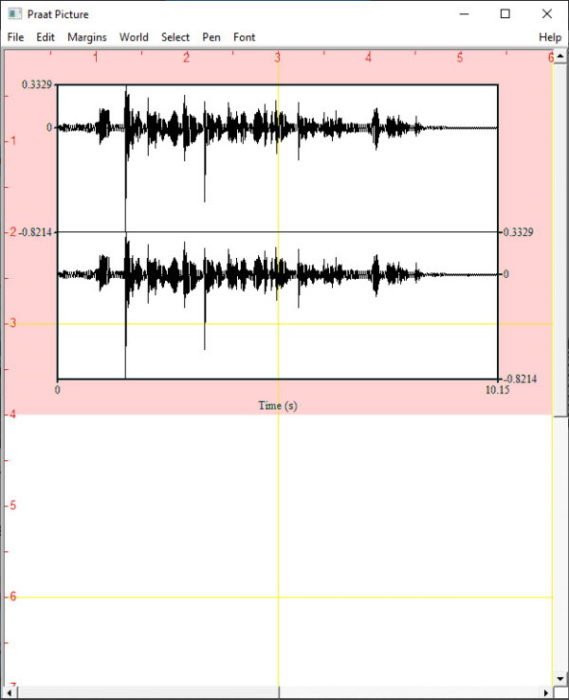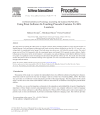
Your complete record for the vowel should have:įor example, the line in your lab book for the above vowel would look like: (Here, you'd write down "260".) Repeat for F2 with the F2 key. Write down the frequency to the nearest Hertz. Press the F1 key on the keyboard, and the frequency for F1 will pop up in a dialogue box: Now you're ready to find out the formants. It's okay to round this to three decimal places, so you could write ".510".) (In the diagram below, the time is "0.509880". Write down the time shown at the top of the red line. The time you chose will be indicated by a vertical dotted red line. When you're sure you've got the vowel you want, click on the point of time within the vowel where you want to measure the formants. It's a good idea to listen to each vowel like this before you measure any formants, just to make sure you're really measuring the vowel you think you are. You can then zoom in on this selection with the "sel" button in the lower left, or you can listen to just that stretch of time by clicking that part of the uppermost of the three sound-playing bars at the bottom. You don't want too many irrelevant coloured lines cluttering up the spectrogram.)īy clicking and dragging horizontally on the spectrogram or the waveform, you can select a stretch of time, which will then be highlighted in pink. (While you're at it, you might as well go to the "Pitch", "Intensity", and "Pulses" menus and make sure that "Show pitch", "Show intensity", and "Show pulses" don't have check-marks. The "sel" button will zoom in on the selected part of the spectrogram, which you select by clicking and dragging on the spectrogram.)įrom the "Formants" menu at the top, make sure that the "Show formants" item has a check-mark:

(The "in" and "out" buttons are self-explanatory. The four buttons in the lower left let you zoom the spectrogram in and out to cover shorter and longer periods of time. The scrollbar at the bottom lets you move the part of the spectrogram that is visible forward and backward in time.Ĭlicking on one of the three grey horizontal bars near the bottom will play the sound - the bottom bar plays the entire sound, the middle bar just the part of the sound whose spectrogram is in the window right now, and the top bar various subparts of the visible sound. This will open a new sound-editor window - you won't be editting the sound, but the window shows you a lot stuff conveniently in one place. Name the file after yourself (e.g., "JohnSmith.wav") and hand it in on a diskette or a CD with the rest of your assignment.Ĭlick the "Edit" button in the main Praat window. Save the recording to a sound file by the choosing the "Write" menu, then "Write to WAV file." This sends the newly recorded recording off to the list of objects in Praat's main window (where you should now see "Sound sound" in the list). Then click the "Save to list" button near the bottom. Click "Play" and listen to the results to make sure they're OK. When you've finished speaking, click the "Stop" button. Don't worry if you make a mistake - just repeat the word and you can skip over the error when you're doing the measurements. Use a natural speech rate and style - not too fast, not too slow, not artificially careful.

While you're speaking, you should see some green bouncing up and down in the vertical white "Meter" stripe (otherwise your computer isn't getting any sound from your microphone). Click the "Record" button when you're ready to start speaking. This will open up a new "SoundRecorder" window. From the main window, choose "New" from the window, then "Record mono sound". Make sure you have a microphone hooked up to your computer. You don't need the picture window, so close it. You'll see three windows: a title window that disappears right away, the main "objects" window (where most of the work gets done), and a "picture" window for drawing fancy printable diagrams. One word should use the frame, the second the frame (except for ), and the third can be any word of your own choosing. Record three words for each of the following vowels. a graph of the vowels, plotting F1 by F2ĭownload Praat from Paul Boersma's website at Follow the instructions there.the recordings you used for your measurements (on a diskette or CD).For this assignment, a sheet of looseleaf is fine.)

(This is referred to below as your "lab book", since in the real world, you'd be doing this in an official-type lab book where all of your measurements go. your written records of each measurement.The assignment is to use the Praat computer program to measure F1 and F2 for three tokens of several English vowels. Using Praat to find vowel formants Using Praat to find vowel formants


 0 kommentar(er)
0 kommentar(er)
